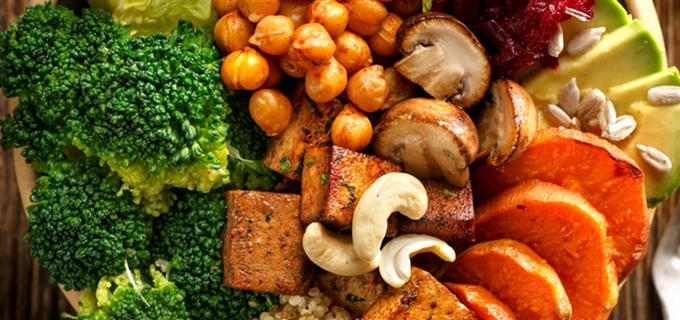Search for a doctor or hospital in your network.


Search for a doctor or hospital in your network.

Get News & Updates Directly To Your Inbox
It’s true. High fiber foods make you poop. They also make you feel full faster so you’re likely to eat less. When you eat less, you’re less likely to pack on extra pounds — pounds that can cause health problems later.
Being overweight can lead to a higher risk of heart disease, stroke, diabetes and other serious health issues.
How? Your body can’t break down fiber. As it moves through your system, it slows digestion. It keeps you regular by making your stools softer and easier to pass. There are two types of fiber — soluble and insoluble. Both should be part of a healthy diet.
This type of fiber attracts water much the way oats absorb water to turn into oatmeal. Soluble fiber turns into a gel during digestion. High-fiber foods that include soluble fiber include oatmeal, nuts, apples, blueberries, seeds, lentils, peas and beans.
Foods with high levels of soluble fiber help lower cholesterol, a key risk factor for heart disease. Fiber attaches to cholesterol particles and sweeps them along as fiber moves out of the body.
Fiber also helps fight diabetes. When your body doesn’t absorb foods with soluble fiber, you skip blood sugar spikes that put you at risk for Type 2 diabetes.
Finally, high fiber foods help you stay regular because they absorb water as the foods pass through your system. That helps bulk up your stool. In fact, fiber supplements generally contain mostly soluble fiber.
This type of fiber is found in the seeds and the skin of fruits (so always eat those peels!) — along with vegetables and whole grains. It adds bulk to the stool and helps food pass more quickly through the stomach and intestines. If you’re irregular (constipated), eat more high-fiber foods to get things moving. Insoluble fiber can improve other bowel-related health problems, such as hemorrhoids and bowel control.
Most Americans don’t eat enough high-fiber foods, according to current guidelines by the U.S. Department of Agriculture and U.S. Department of Health and Human Services. Women need 25 grams of fiber per day, but usually consume only 13 grams. Men need 38 grams per day, but eat only about 17.
Try these simple tips to add more high fiber foods to your diet:
Remember, it’s not just how much fiber you eat that keeps you healthy, but what kinds of fiber you choose to eat. What are your favorites?
Originally published 11/5/2015; Revised 2019, 2022, 2023
Blue Cross and Blue Shield of Texas, a Division of Health Care Service Corporation,
a Mutual Legal Reserve Company, an Independent Licensee of the Blue Cross and Blue Shield Association
© Copyright 2025 Health Care Service Corporation. All Rights Reserved.
Verint is an operating division of Verint Americas, Inc., an independent company that provides and hosts an online community platform for blogging and access to social media for Blue Cross and Blue Shield of Texas.
![]() File is in portable document format (PDF). To view this file, you may need to install a PDF reader program. Most PDF readers are a free download. One option is Adobe® Reader® which has a built-in screen reader. Other Adobe accessibility tools and information can be downloaded at https://www.adobe.com/trust/accessibility.html.
File is in portable document format (PDF). To view this file, you may need to install a PDF reader program. Most PDF readers are a free download. One option is Adobe® Reader® which has a built-in screen reader. Other Adobe accessibility tools and information can be downloaded at https://www.adobe.com/trust/accessibility.html. ![]()
![]() You are leaving this website/app ("site"). This new site may be offered by a vendor or an independent third party. The site may also contain non-Medicare related information. Some sites may require you to agree to their terms of use and privacy policy.
You are leaving this website/app ("site"). This new site may be offered by a vendor or an independent third party. The site may also contain non-Medicare related information. Some sites may require you to agree to their terms of use and privacy policy.
Powered by Verint